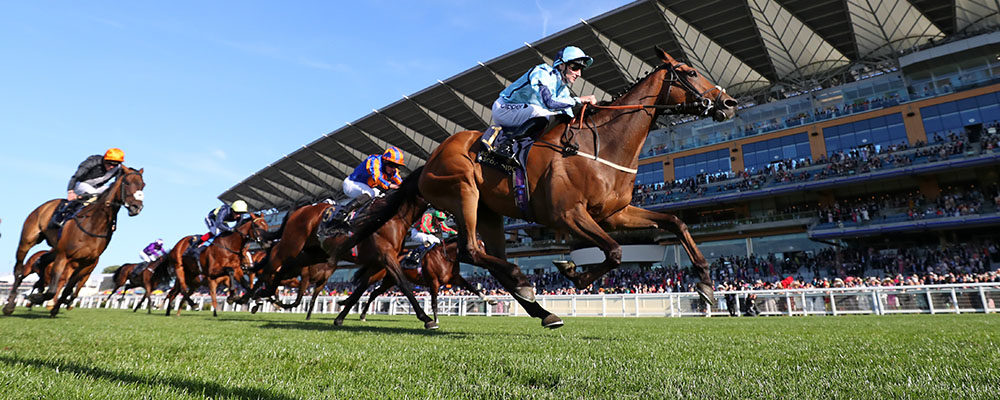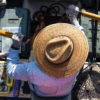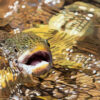A Day at the Races
The first time I saw a horse on a track was at the Foxfield Races in Charlottesville. Foxfield was a fixture on the Washington and Lee University social calendar. I went at least seven times, but I only ever saw one race. The rest of the day, I spent tailgating, slipping in the mud and drinking great Bloody Marys made by a young-yet-skilled-at-drink-making Southern gentleman date who was most likely dressed in seersucker. I am from California, and the steeplechase and atmosphere surrounding it were very foreign to me even though I grew up riding and watching the Kentucky Derby religiously with my father.
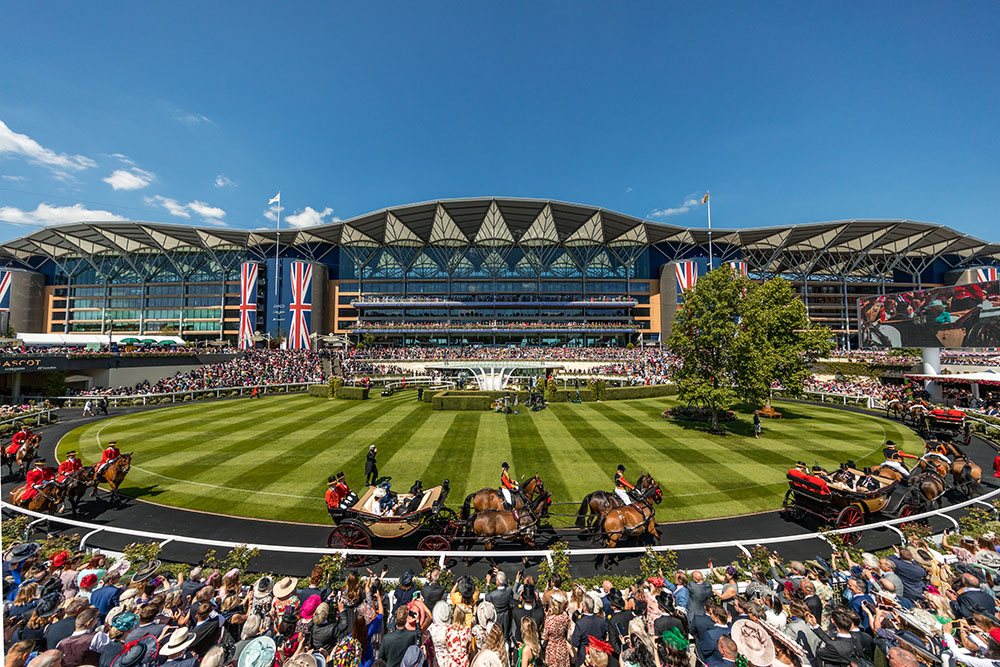
Fast-forward 30 years, a friend from my W&L days, Mary Stanton Smith, was going to be in London. Would I like to go to Royal Ascot with her? You bet your money on a bob-tailed nag I’d like to go. Smith had organized a chic gazebo in the infield with access to the Royal Enclosure. The picnic shamed any tailgating and cheap wine-sipping I had experienced at Foxfield, complete with champagne and gourmet delights. Then we watched the horses race, and I was hooked.
“I have been coming to Royal Ascot since I was about 20 years old because my best man’s parents proposed me.”
To enter the Royal Enclosure, you must be a member or a member’s guest. It’s a highly coveted ticket to one of the premier events of the English “season.” Typically, a close friend or family member proposes. Royal Enclosure member Dominic Plugge tells me his story. “I have been coming to Royal Ascot since I was about 20 years old because my best man’s parents proposed me.” Plugge then nominated his wife and son.
This year my children were old enough to attend Royal Ascot as my guests as I became a member of the Royal Enclosure after that first year. In the past, there were not “guest days,” according to Vicky Plugge, a daughter of a horse trainer and jockey. Even now there are strict rules on which days guests can attend. The first day of the race week is the one day when guests are not allowed.

The Royal Enclosure also operates a strict dress code policy, and if you don’t follow it, you are not permitted entry. There is nothing more English than the attire at Royal Ascot. Of course, you can attend Royal Ascot outside of the Royal Enclosure in either the Queen Anne Enclosure, where the dress code is less severe, or in the Windsor Enclosure, where there is no dress code at all and decorum is questionable at times, too.
Part of the fun of attending Royal Ascot is getting dressed up. Without all this finery and tradition, Royal Ascot would be a race meeting like any other. Alas, my son, JP, like most 18-year-olds, didn’t own a top hat. With some research, I learned that the “smartest” hats were silk and not made anymore. The French loom that produced the heavy silk used in the manufacture of the hats burned in a fire in the 1960s. Since then, only vintage hats have been available for purchase. Of course, you can buy or rent a cheaper felt hat; JP tried one. “Mum, I look like Willy Wonka.” He wasn’t wrong. We took the plunge and invested in the silk hat.
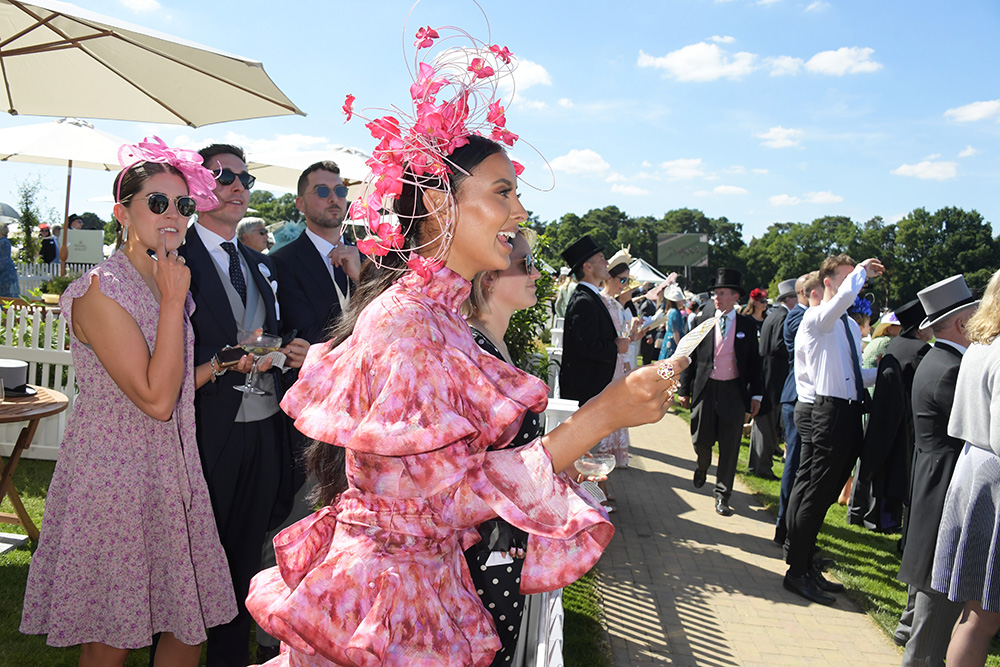
My attire and my daughter Emmy’s outfit were easier to procure. Women’s hats in the Royal Enclosure must have a four-inch base, no “fascinators” allowed, but they can be as big as you like. Dresses must be formal daytime wear. On the unofficial Ladies’ Day, you can see some extraordinary outfits. Still, contrary to common belief, there is no judging of these outfits—at least officially.
We headed out in my trusty Land Rover Defender on Wednesday morning, the second day of the race week. In the carpark near us, “boots” were packed with Fortnum and Mason baskets, beautiful gazebos and chairs. People enjoyed champagne, Pimm’s and Bloody Marys at the picnics.
After our feast, we headed to the Enclosure so we didn’t miss the Royal Procession starting at 2 p.m. sharp. The Royal family’s short journey around the track in their carriages is a highlight, and since 1825 it has marked the start of the Royal Meeting. It’s always exciting to see who shows up. Would the Queen come to Ascot this year?
At the gates of the Royal Enclosure, we showed our badges, which were handwritten with official names and titles, if you have a title. After cold drinks we went to the parade ring to find an excellent spot to see the carriages. A racegoer beside me said to his companion, “Only the French and Americans are standing here to see the Royals.” I heard plenty of English accents, so I thought he was misinformed and noticed his excitement and picture-taking when Prince Charles and Camilla, the Duchess of Cornwall, arrived in their carriage. As it turns out, the Queen did not attend Royal Ascot this year for the first time since 1946.
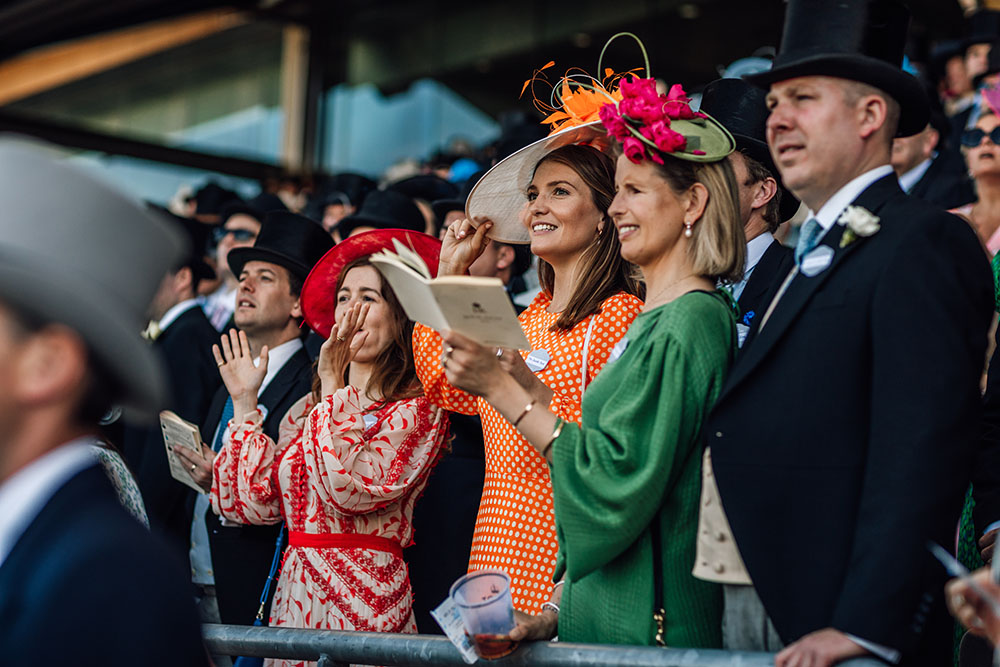
Her Majesty is known as a keen horsewoman, like Queen Anne who started the tradition of Royal Ascot in 1711. While riding near Windsor Castle, Queen Anne spotted a parcel of land which she believed was “ideal for horses to gallop at full stretch.” Royal Ascot’s inaugural race soon followed that same year. Twelve monarchs have presided over the meeting in its 300 years, and Queen Elizabeth II is possibly the most horse-loving of them all.
The children and I took our places at the track—and all the sudden, they were off!
With Her Majesty not in attendance, I decided to place a bet in her honor. The bookmakers’ booths are abundant, each touting its odds. I settled on one that was not surrounded by other “punters.” Perhaps that was my first mistake. It was the second race, named The Queen’s Vase, with a total purse of nearly $300,000. At one mile six furlongs, it is four furlongs longer than the Kentucky Derby. I placed my bet on number 11, the Queen’s bay filly, Perfect Alibi, and then we made our way to the Grandstand.
The Royal Enclosure offers fine dining, proximity to the horses and is right on the finish line. The Enclosure as it exists today was developed in the mid-19th century as a place for Queen Victoria and Prince Albert to host Czar Nicholas I of Russia for the running of the most prestigious race of the week, the Gold Cup in 1844. The Gold Cup was known as the Emperor’s Plate in honor of Emperor Nicholas for nine years until the Crimean War. The race, held on the third day of Royal Ascot, is Britain’s version of the Kentucky Derby as the first race in the Stayers Triple Crown. (A stayer is a horse that does well over long distances.)
Along with the Gold Cup, the Queen’s Vase is one of three perpetual trophies at Royal Ascot. Would Perfect Alibi take the trophy home? The children and I took our places at the track—and all the sudden, they were off! The filly started well, but I noticed she began to fall behind. Hafit, a horse owned by Godolphin, Sheikh Mohammed of Dubai’s stable, took the lead. Then Perfect Alibi fell behind the pack. Despite our cheering, she finished 10th out of 12 runners. Hafit came in third after a strong push.
We watched several American-trained horses run, too. Wesley Ward was the first American-based trainer to win at Royal Ascot. Ward’s Strike the Tiger won the Windsor Castle Stakes in 2009. Since then, Ward has won 11 more races. This year he had five horses at the meeting. It is a different race for American horses. Royal Ascot is a grass track, and horses run clockwise—contrary to the counter-clockwise running in the United States. One theory is that clockwise racing began in the United States to protest the English tradition in 1788.
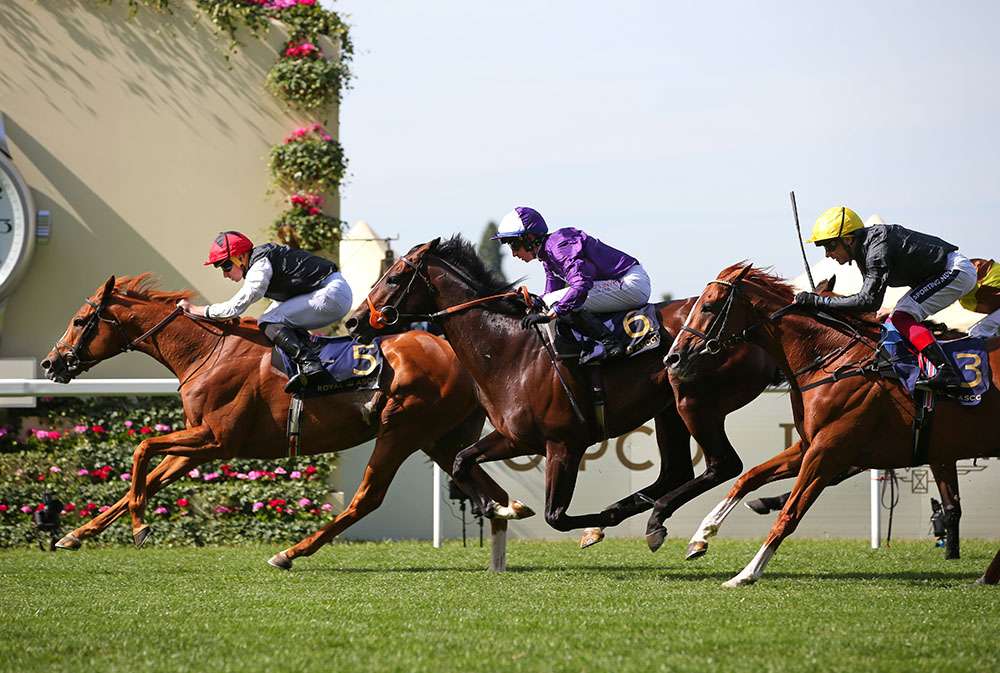
Unfortunately, our betting remained unsuccessful. Finally, my son chose a winner in the 6th race. He brought home £10.75 after a little “flutter” on Little Big Bear. Even a minor win got the adrenaline pumping and added to the day’s excitement. However, the most enjoyment came in the seventh and final race of the day. Bolstered by JP’s recent win and armed with a Racing Post, we chose Haziya, a filly bred by the Aga Khan’s stable, as did the three young financiers sitting in front of us. Haziya starts strong, but by the second furlong, she starts to struggle and finishes dead last. A long shot won the race with 40-1 odds. We didn’t suffer as badly as the young bankers, who lost £20,000.
We exited the emptying Royal Enclosure to the sounds of “My Bonnie Lies Over the Ocean.” Carrying on a tradition of singing in the bandstand since the 1970s, racegoers belted out, “Bring back, bring back, bring back my bonnie to me….”
My children and I have started our own Royal Ascot tradition and will return next year. In a world changing faster than a filly can run a furlong, it’s fantastic to return to a place where time seems to have stopped—top hats and all.
Merrill Watson, a native Californian living in the English countryside, fell in love with writing while sending letters home from her hut in Senegal in the 1990s. A freelance writer, she loves to share her passions for outdoor sports, travel and art with her readers and fellow travelers on the ground during tours in her trusty Land Rover Defender with Landy Tours @landy.tours.
Photos Courtesy of Royal Ascot

